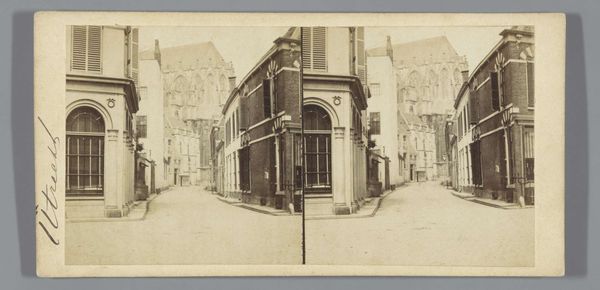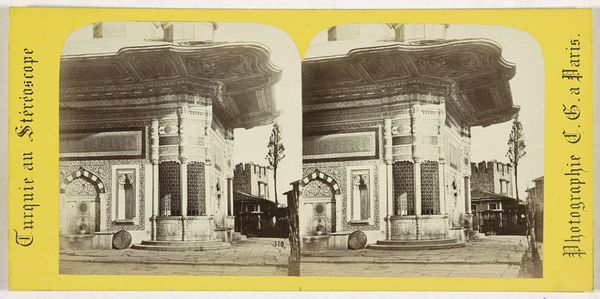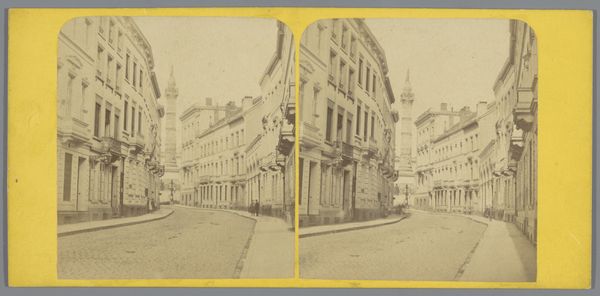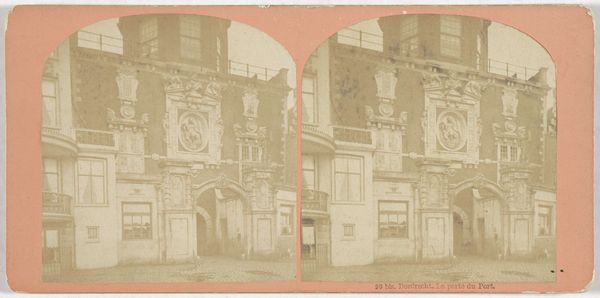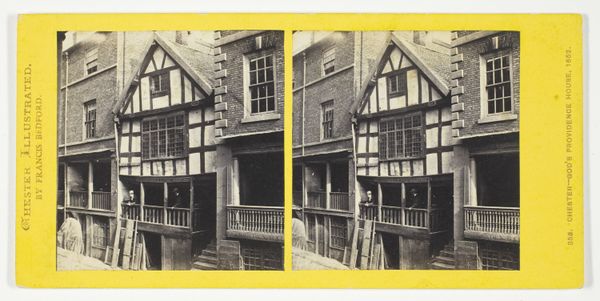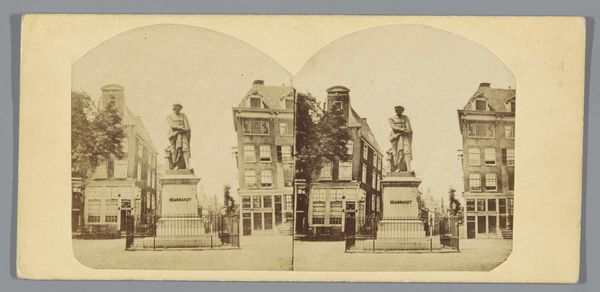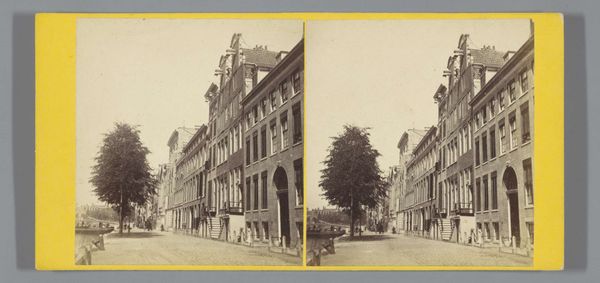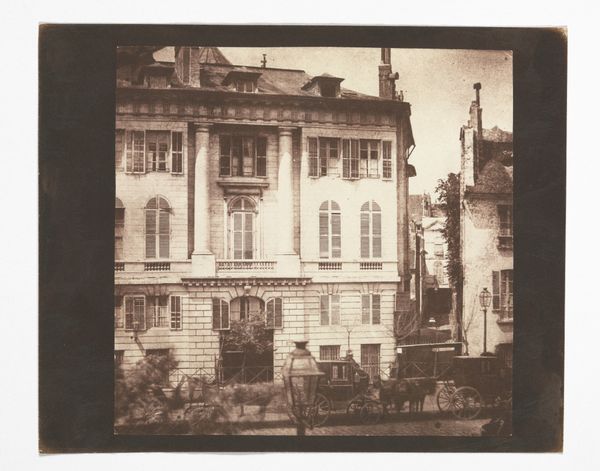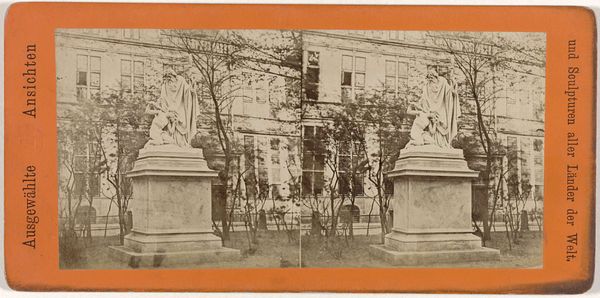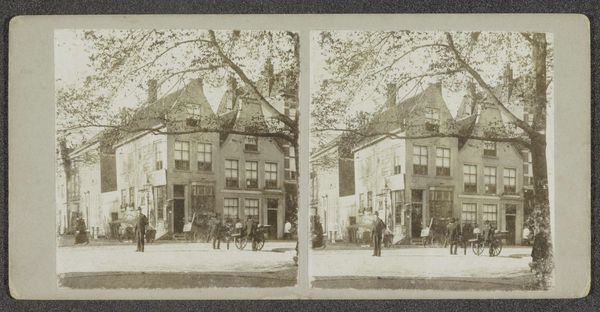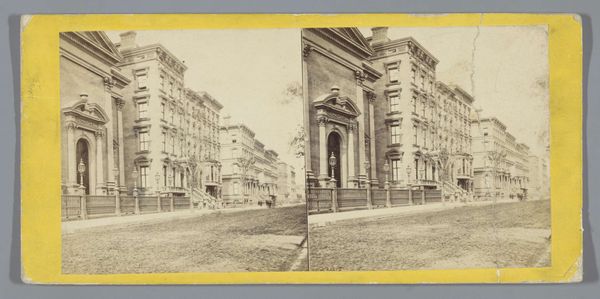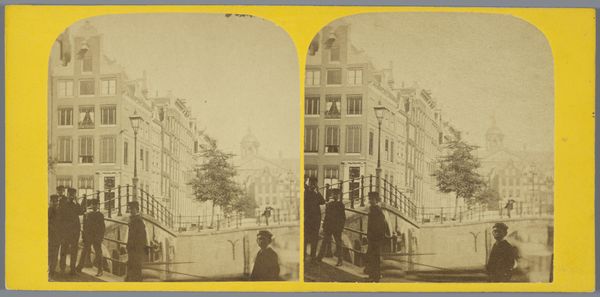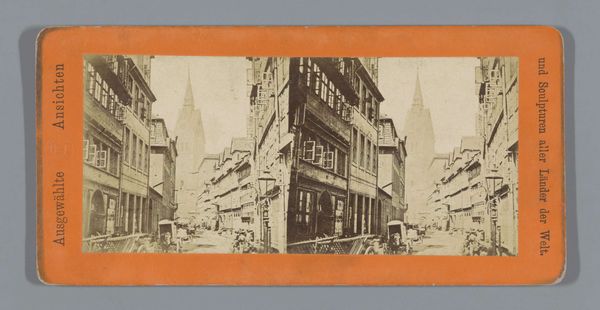
Monument voor keizer Karel IV voor de kerk van Franciscus van Assisi of de Kostel svatého Františka z Assisi, Praag 1861 - 1870
0:00
0:00
anonymous
Rijksmuseum
daguerreotype, photography, sculpture, site-specific
#
portrait
#
statue
#
daguerreotype
#
photography
#
sculpture
#
carved
#
site-specific
Dimensions: height 87 mm, width 169 mm
Copyright: Rijks Museum: Open Domain
Curator: Let's take a moment to consider this striking image from the Rijksmuseum's collection, titled "Monument voor keizer Karel IV voor de kerk van Franciscus van Assisi of de Kostel svatého Františka z Assisi, Praag," captured between 1861 and 1870. It appears to be an anonymous daguerreotype. Editor: Immediately, I am struck by the formality. The imposing statue set against that rigid architectural backdrop creates a powerful sense of permanence and authority. The stark monochrome only enhances this solemnity. Curator: Precisely. Notice how the photographer meticulously aligns the camera to emphasize the statue’s verticality, further accentuated by the church's geometric facade. The subtle play of light and shadow across the textured surface provides the only variation in the visual field, almost an abstraction of form. Editor: The statue of Emperor Charles IV obviously is the main subject. To the Czechs he is both controversial and considered the "father of the nation." Is that figure also a statement on faith and imperial power? Curator: Iconographically, the placement before the Church of St. Francis adds layers of interpretation. Charles IV's reign marked a golden era, a confluence of religious fervor and imperial authority. The statue itself is enclosed by a decorative railing and is a site-specific work meant to impress and command the physical space. Editor: Given the meticulous execution evident, there is some tension and dissonance: why did the photographer choose such an austere photographic medium when this sculpture so powerfully evokes permanence and dominance? Curator: An excellent observation. The rigidity and clarity of the daguerreotype, typical for that era, render the tactile presence of carved stone in high fidelity. Note the use of fencework, lampposts, and horizontal ground line – perhaps intentional constraints of capturing and understanding public space as distinct from private authority in urban life. Editor: Perhaps a meditation on what monuments commemorate, which includes their decay over time? As a historic portrait of an emperor, and a building that reflects centuries of belief, its rigid forms suggest a desire to stop time. The soft yellow of the aged paper on which it's mounted only makes this seem to fade despite its creator's aspirations. Curator: This artwork is much more than a mere photographic rendering; it is a powerful dialogue between mediums and visual codes. Thank you for these insights. Editor: Thank you! Considering these contexts encourages further study, reminding us that artistic creation often embodies profound reflections about the cultural moments they memorialize.
Comments
No comments
Be the first to comment and join the conversation on the ultimate creative platform.
